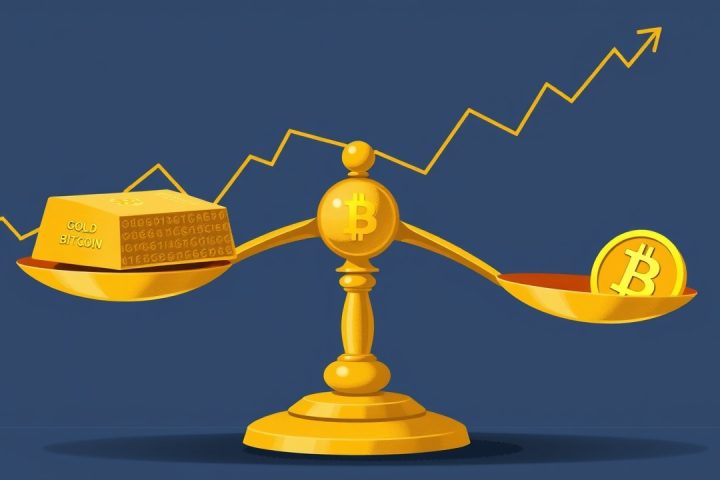IRS Enhancements in Cryptocurrency Monitoring
Since 2017, the Internal Revenue Service (IRS) has significantly enhanced its capabilities to monitor cryptocurrencies, evolving from focused investigations of individual traders to extensive data requisitions from prominent cryptocurrency exchanges and firms. The agency employs tools such as “John Doe summonses” and advanced blockchain analysis to scrutinize crypto transactions almost in real time, as highlighted by insights from legal experts and official government documents.
Shift in IRS Strategy
David Klasing, a tax attorney specialized in cryptocurrency regulations, pointed out that the IRS’s initial focus was on a limited set of users whose transactions reached specific thresholds. However, its recent approach indicates a shift towards a more comprehensive strategy aimed at detecting tax evasion across a broader range of platforms. Major players in the market, including Coinbase, Kraken, Poloniex, and Circle, were early targets of the IRS investigations, particularly after a notable summons was issued to Coinbase in 2016 for information on 14,000 accounts, although this number was later reduced through legal channels.
IRS Enforcement Actions
In fiscal year 2021 alone, aggressive enforcement actions resulted in the IRS seizing around $3.5 billion worth of cryptocurrencies, representing a staggering 93% of the agency’s total asset seizures for that year, according to the Criminal Investigation Division. By 2021, the agency had also secured court approval for similar directives aimed at Kraken users whose transactions exceeded $20,000 between 2017 and 2020, as well as customers of Circle and Poloniex who engaged in comparable trading amounts.
IRS Audits and Compliance Measures
A July 2024 report from the Treasury Inspector General for Tax Administration (TIGTA) showed that the IRS had initiated 216 audits and sent approximately 15,000 preliminary notifications, dubbed “soft letters,” to crypto users flagged via exchange activity. Klasing mentioned that the process for courts to approve these John Doe summonses requires the IRS to demonstrate a few legal standards: sufficient basis for suspecting tax law violations within identifiable groups while proving that requisite information isn’t accessible from other sources. Unfortunately, he noted, these measures offer limited safeguards for users, as courts demand only minimal justification from the IRS, without requiring proof that every individual under inquiry has committed a violation.
Expansion of Surveillance Tools
The IRS’s scope of surveillance has expanded, transforming the previously isolated Electronic Payment Systems Initiative into a tool for monitoring virtual currencies. The agency now leverages data from exchanges combined with blockchain information to assemble thorough profiles of financial activities, as indicated in IRS Agent Karen Cincotta’s findings during the Kraken inquiry.
Non-Compliance Rates and Future Reporting Requirements
As of 2024, a staggering 75% potential non-compliance rate was reported among taxpayers identified through digital asset exchanges, contributing to active audit investigations within the early periods of the fiscal year. The IRS’s Large Business and International Division has begun utilizing information gleaned from John Doe summonses to advance outreach and initiate examinations as part of its compliance campaign.
In this new landscape, tax attorney Nick Waytula emphasized that the broadened usage of John Doe summonses imposes a higher compliance standard for crypto businesses. As historical non-compliance, even if unintended, may now be flagged more readily, companies could face penalties or, in severe cases, criminal charges.
Waytula described this phase as a critical shift in crypto tax enforcement, suggesting that future tax obligations could morph into an “opt-out” structure rather than the previous “opt-in” system requiring voluntary user disclosures. This evolution is further reflected in the imminent 1099-DA reporting requirements, set to begin in 2025, aimed at correcting discrepancies in previous reporting practices that led to confusing IRS notices. Nevertheless, he warned that due to each exchange’s 1099-DA format not including information from other exchanges, there exists potential for further misunderstandings during the reporting process.
Challenges and Criticism
Klasing noted that his firm has handled various cases involving clients who received IRS notifications regarding substantial reporting discrepancies. The Government Accountability Office (GAO) criticized the earlier 1099-K forms for offering mere aggregates without requisite basis information, rendering them inadequate. The 1099-DA form is anticipated to rectify these issues, although challenges may persist due to how IRS’s AI-driven models target cases based on current return data, rather than on the datasets from John Doe summonses.
Dmitri Alexeev, a CPA and tax partner at Aprio, remarked that these developments align with a gradual increase in regulatory scrutiny following the Coinbase summons, indicating a sustained focus on cryptocurrency oversight. This scenario underscores the necessity for exchanges to bolster their anti-money laundering (AML) and know-your-customer (KYC) data practices.
Privacy Concerns and Regulatory Landscape
On the civil liberties front, a setback for privacy advocates occurred in July when the Supreme Court opted not to hear James Harper’s appeal challenging the IRS’s access to Coinbase data through a John Doe summons. Coinbase, supported by a coalition of states and organizations, had argued against the broadened interpretation of the “third-party doctrine”, which extends governmental access to information held by third-party service providers, a concept they contend is ill-fitting for the realm of cryptocurrencies.
Although the controversial DeFi broker rule proposed during the Biden administration was eliminated in July—removing certain reporting obligations for decentralized platforms—centralized exchanges continue to navigate stringent reporting demands. Waytula cautioned that overly aggressive enforcement strategies might alienate compliant users as they face unnecessary complexity, particularly in a sector characterized by a fundamental distrust of government oversight.
Conclusion
While there is currently no concrete evidence indicating systematic mis-targeting of crypto users due to flawed exchange records, matching programs can erroneously flag notices when discrepancies arise, even when tax returns are accurate. As of now, the IRS has yet to comment on these unfolding developments.




